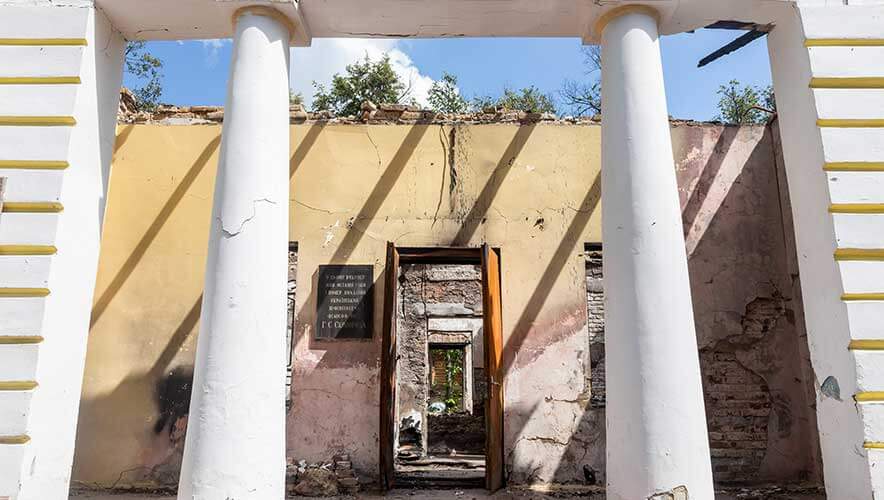Climate Change and the Rise of Dark Green Ideologies
Security professionals concerned with violence prevention must stay current on research and trends that may influence the potential for individual and group violence. While the topic of climate change and global warming can arouse strong reactions, including skepticism and outright denial, more than 99.9 percent of peer-reviewed scientific papers (n = 88,125) have concluded that climate change is real and that human activity is the main cause.
Advances in attribution science have also increased confidence in the role climate change is playing in intensifying extreme weather events and boosted the belief that the extreme heat experienced around the world bears the fingerprints of climate change. 2023 was officially the hottest year on record and is thought to have been the hottest experienced on Earth in the past 125,000 years.
Heat distorts human behavior and increases the risk of violence. This is something that should be on the mind of every security professional and will necessarily lead to further development of “climate-informed” security practices. In addition to individual conflict, climate change can serve as a driver of extremism, terrorism, civil unrest, and war.
Climate-related violence potential exists along the entire extremist continuum from the far-left to the far-right. Violent extremists have committed acts of terrorism, interpersonal violence, and/or sabotage for ecological, environmental, and animal right causes against people or property.
From the far-left to the far-right, four shades of green identify the various activist and eco-extremist ideologies.
Light green. The light green movement believes that protecting the environment is a personal responsibility. Proponents are considered “transformational activists” rather than extremists and do not emphasize environmentalism as a distinct political ideology. They see environmentalism more as a lifestyle choice and strongly advocate change at the individual level. Light green environmentalism is often associated with mainstream environmental organizations. Critics of light green environmentalism argue that it is not radical enough to address the severity of the environmental crisis.
Bright green. The bright green environmentalist movement differentiates itself from darker shades of environmentalism by focusing on personal, technological, governmental, and corporate solutions to the climate crisis. Proponents advocate for green energy, electric vehicles, efficient manufacturing systems, bio- and nanotechnologies, closed loop materials cycles, dense urban living, and sustainable product designs. Bright green environmentalism is less about the problems and limitations associated with climate change and more about the tools, models, and ideas that already exist for overcoming them. Bright green environmentalists distance themselves from the bleakness and anger connected to the protests and direct action of other groups.
Deep green. Deep green signifies radical environmental movements that believe mainstream environmental activism is ineffective and insufficient to address the current situation. The deep green perspective holds that industrial civilization is fundamentally unsustainable and must be actively and urgently dismantled to secure a future for all species on the planet. This perspective advocates for sabotage against infrastructure and violence, which it views as necessary tactics to achieve its goal of dismantling industrial civilization.
Dark green. Dark greens are individuals and groups who believe violence is justified and necessary to advance or defend their causes or beliefs. The most notable and extreme in this group hold eco-fascist views.
Eco-fascism combines white supremacy with environmentalism, with the belief that controlling population growth, criminalizing migration, and rejecting multiculturism are the only ways to save the planet from environmental destruction, and to protect increasingly scarce resources for the rightful occupants of a nation. Dark green environmentalism, or extreme-right environmentalism, has its roots in the “blood and soil” thinking of Nazism, and it is concerned with protecting the spiritual link that supposedly exists between man and nature.
Dark greens are individuals and groups who believe violence is justified and necessary to advance or defend their causes or beliefs.
Eco-fascism is becoming an animating force among young far-right extremists and is a growing concern worldwide. The perpetrators of mass shooting attacks in Christchurch, New Zealand; El Paso, Texas; and Buffalo, New York, each claimed that their attacks were justified—at least in part—by environmental concerns. With each attack, the eco-fascist movement continues to promote further acceleration under the guise of saving the white race and the environment.
Recognizing the Warning Signs
It can be hard to know when extreme views become something more dangerous, and the signs of radicalization to extremist ideologies aren’t always obvious. There is no specific profile for a person likely to become involved in extremism or a single indicator of when a person might adopt violence in support of extremist ideas. Security and threat assessment professionals need to consider the individual’s behavior in context over time.
There are signs that may indicate that an individual is being radicalized to an extreme environmental ideology. As with other forms of extremism, several behaviors and communications are associated with radicalization to darker green ideologies. These signs include:
- Espousing extreme xenophobic, anti-migrant views
- Expressing extreme anti-urbanization sentiments
- Expressing an anti-technology worldview
- Referencing known eco-extremist figures or groups
- Using eco-fascist terminology or symbols
- Participating in eco-extremist group activities (e.g., rallies, distributing leaflets and posters)
- Writing or creating artwork, including music, promoting violent eco-extremist messages
- Displaying inappropriate interest in or surveillance of critical infrastructure locations
As the impact of climate change becomes more significant in daily lives, concerns about individual and group survival will increasingly animate extremists on both the far-left and far-right. Environmental extremists along the entire ideological spectrum will likely escalate dangerous and disruptive activities, including the use of interpersonal violence.
We can foresee that accelerationists and eco-fascist subcultures will continue to direct violence toward technology and the sabotage of critical infrastructure, as well as toward migrants and others representing a threat by way of overpopulation or competition for increasingly scarce resources. This distortion of human behavior related to climate change requires the attention of security professionals in every sector.
Steven Crimando, MA, CTM, is the principal of Behavioral Science Applications LLC, a training and consulting firm focused on human factors in crisis prevention and response. He is a certified threat manager (CTM) and a consultant for corporations, government agencies, police, and military programs.



















